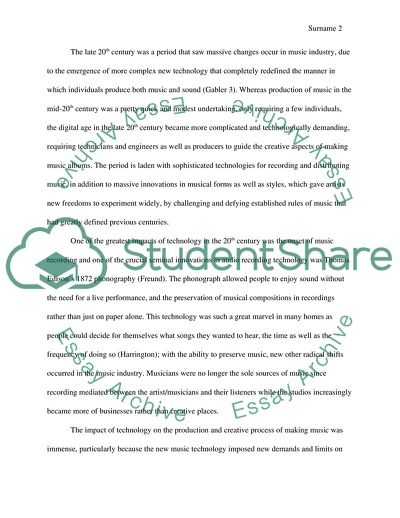Cite this document
(Development of Music Technology Essay Example | Topics and Well Written Essays - 2000 words, n.d.)
Development of Music Technology Essay Example | Topics and Well Written Essays - 2000 words. https://studentshare.org/music/1811254-how-has-music-technology-developed-in-the-20th-century-and-how-has-it-been-used-as-a-creative-and-production-tool
Development of Music Technology Essay Example | Topics and Well Written Essays - 2000 words. https://studentshare.org/music/1811254-how-has-music-technology-developed-in-the-20th-century-and-how-has-it-been-used-as-a-creative-and-production-tool
(Development of Music Technology Essay Example | Topics and Well Written Essays - 2000 Words)
Development of Music Technology Essay Example | Topics and Well Written Essays - 2000 Words. https://studentshare.org/music/1811254-how-has-music-technology-developed-in-the-20th-century-and-how-has-it-been-used-as-a-creative-and-production-tool.
Development of Music Technology Essay Example | Topics and Well Written Essays - 2000 Words. https://studentshare.org/music/1811254-how-has-music-technology-developed-in-the-20th-century-and-how-has-it-been-used-as-a-creative-and-production-tool.
“Development of Music Technology Essay Example | Topics and Well Written Essays - 2000 Words”. https://studentshare.org/music/1811254-how-has-music-technology-developed-in-the-20th-century-and-how-has-it-been-used-as-a-creative-and-production-tool.


